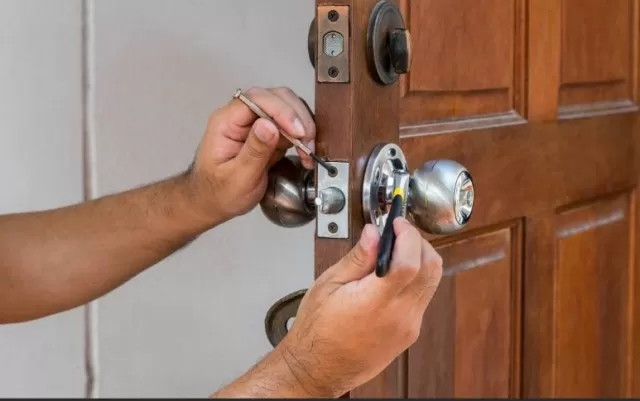Rental Home Don’ts: What to Avoid. Many lease agreements provide explicit details about what tenants are allowed and not allowed to do within the rental property. However, some renters overlook the importance of thoroughly reviewing the fine print in their lease contracts.
Changing Locks in Your Rental: A Matter of Security and Communication

If you have concerns about the security of your rental home and are contemplating changing the locks, it’s essential to proceed with caution and open communication.
Before you tinker with the latches, it’s imperative to engage in a conversation with your landlord. This is important because altering the locks without permission can potentially infringe upon the owner’s rights, such as in emergency situations where access to the property is necessary, even when you’re not present (e.
g. , if a neighbor observes water seeping from the house).
Your best course of action is to seek the landlord’s permission for a lock change.
Once you have the green light, consider providing the landlord with a spare key for access. This approach ensures both your security and the landlord’s ability to address any unforeseen circumstances, maintaining a balance between tenant rights and property ownership.
Revamping Your Rental\’s Landscape: Caution with Tree and Shrub Removal
Expressing your personal style within your rental home is entirely acceptable, but it’s essential to remember that landscaping elements, such as trees and shrubs, are integral parts of the property.
Consequently, tenants generally do not have the authority to remove them without obtaining prior consent from the landlord.
Attempting to remove plantings without permission can lead to serious repercussions.
The property owner may perceive it as defacement, potentially resulting in legal action against you for damages. To avoid these complications and maintain a positive landlord-tenant relationship, always seek approval before making any significant alterations to the property’s landscaping.
Your creative vision can flourish within the boundaries of mutual understanding and consent.
Painting Your Rental: Seek Permission and Color Approval

Landlords often have varying policies when it comes to painting their rental properties.
These policies can range from tenants never being allowed to wield a paintbrush to enthusiastic encouragement to give the walls a fresh coat. To ensure you’re in compliance with your rental agreement and maintain a positive landlord-tenant relationship, it’s crucial to follow a simple but essential rule: always ask for permission before embarking on any interior or exterior painting project.
Furthermore, consider seeking approval for your chosen Paint Colors as well.
This extra step demonstrates your respect for the property and ensures that your creative expression aligns with the landlord’s preferences. By approaching painting projects with open communication and a willingness to collaborate, you can create a living space that suits your taste while honoring the terms of your rental agreement.
Considering Subletting? Proceed with Caution and Consent
If you’re contemplating an early departure from your rental property before the lease term expires, subletting might seem like an appealing option.
However, it’s important to recognize that landlords typically have stringent tenant vetting procedures in place, and they are often hesitant to agree to subletting arrangements. Attempting to sublet without obtaining the landlord’s explicit permission can lead to serious consequences.
Subletting without consent generally violates the terms of the lease agreement, which could leave you liable for any damages to the property.
It’s imperative to communicate openly with your landlord about your intentions and explore the possibility of subletting with their approval. This approach not only keeps you in compliance with your lease but also helps maintain a positive relationship with your landlord during your tenancy.
Pet-Friendly Rentals: The Importance of Honoring Lease Agreements

For those who cherish their animal companions, it’s vital to be aware that numerous lease agreements explicitly prohibit the presence of dogs, cats, and other beloved furry friends in rental properties.
Attempting to sneak your pet, whether it’s Fluffy or Fido, into a rental unit is not only a breach of the lease but also a potentially serious offense that could result in eviction.
If you’re planning to relocate with your pet, the best approach is to focus on renting properties that explicitly permit animals.
This not only ensures you’re within the bounds of your lease agreement but also provides a welcoming environment for both you and your pet. By respecting the rules set forth in your rental agreement, you can enjoy a harmonious tenancy while sharing your living space with your beloved four-legged companion.
*The information is for reference only.